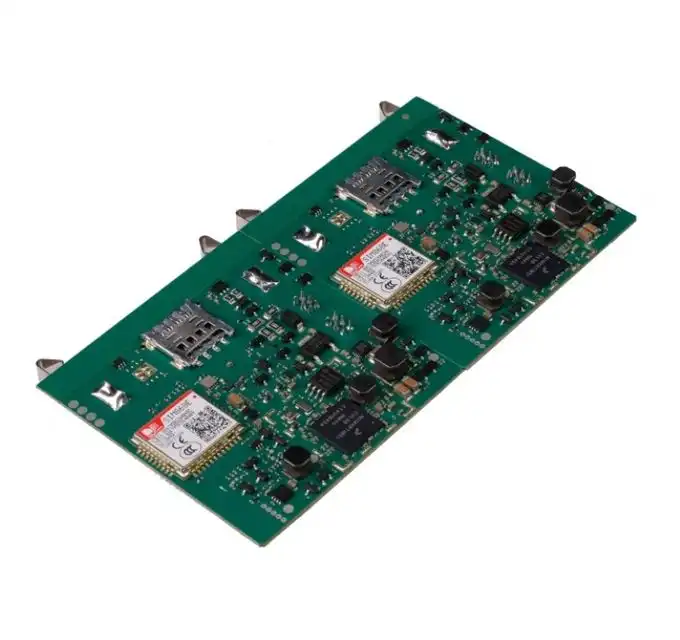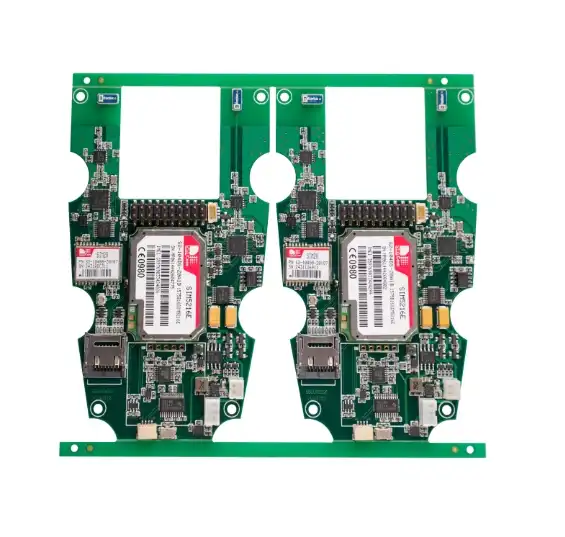Fast PCB Prototyping for Medical Devices: 5 Things to Consider
Developing medical devices demands precision that goes beyond conventional electronics manufacturing. Fast PCB prototyping serves as the critical bridge between your innovative concept and a life-saving product that meets rigorous regulatory standards. Medical device engineers face unique pressures: FDA compliance, biocompatibility requirements, fail-safe reliability, and accelerated time-to-market expectations. A prototype isn't just a proof-of-concept—it's the foundation for regulatory documentation, clinical validation, and ultimately, patient safety. Choosing the right approach to rapid PCB prototyping for medical applications determines whether your device reaches the market in months or stalls in endless revision cycles. The wrong manufacturing partner creates expensive redesigns, compliance failures, and missed opportunities. The right partner transforms your vision into certified reality through expertise in medical-grade materials, regulatory frameworks, and design optimization that works from the very beginning.
Ring PCB Technology Co., Limited - Your Medical Device Prototyping Partner
Located in China with global reach, Ring PCB has delivered specialized PCB and PCBA solutions since 2008. The company maintains ISO13485 certification specifically for medical device quality management systems, alongside ISO9001, ISO14001, IATF16949, and UL certifications. This certification portfolio demonstrates systematic compliance capabilities that general electronics manufacturers cannot match.
Ring PCB's core specifications span 1-48 layer PCB fabrication with advanced capabilities in rigid, flexible, and rigid-flex constructions. The company's 500+ professionals include dedicated R&D engineers who optimize designs for medical device applications. Annual production capacity exceeds millions of boards, with significant export volume serving medical device manufacturers across North America, Europe, and Asia.
Technical advantages include 24/7 production operations with three-shift engineering support, enabling rapid turnaround for fast PCB prototyping projects. The company's component sourcing team procures medical-grade components from authorized distributors, ensuring authentic, traceable parts that satisfy regulatory audits. Ring PCB's full turnkey services—from bare board fabrication through component procurement, SMT/DIP assembly, testing, and box-build—streamline medical device development by eliminating multiple-vendor coordination headaches.
Typical customers include medical device OEMs developing patient monitoring equipment, diagnostic instruments, therapeutic devices, and implantable electronics. The company's innovation capability shows through continuous investment in advanced equipment like automated optical inspection (AOI), X-ray inspection for BGA/QFN packages, and thermal imaging systems that validate performance during prototyping. Ring PCB's quality control maintains defect rates below industry standards, critical for medical applications where reliability cannot be compromised. The company's reputation within medical device circles stems from consistent delivery, responsive technical support, and deep understanding of regulatory pathways across different markets.
The Regulatory Landscape: Building Compliance Into Your Prototyping Process
Medical device regulations shape every aspect of fast PCB prototyping. FDA requirements in the United States, CE marking under Medical Device Regulation (MDR) in Europe, and similar frameworks globally demand documented quality systems from the earliest development stages. IEC 60601 series standards govern medical electrical equipment safety and performance.
Ring PCB's ISO13485 certification ensures quality management systems align with medical device requirements. This means documentation, traceability, and process controls exist at the prototyping stage, not bolted on later. When you request fast PCB prototyping for a cardiac monitor or infusion pump, Ring PCB's systems automatically capture lot numbers, material certifications, and process parameters that regulatory submissions require.
The certification also mandates Design History Files (DHF) and Device Master Records (DMR)—documentation frameworks that begin during prototyping. Ring PCB maintains records for every prototype build, creating audit trails that survive regulatory scrutiny. This systematic approach accelerates your path to 510(k) clearance or CE marking because compliance evidence already exists.
Component traceability represents another critical compliance element. Medical devices require documented evidence that components come from legitimate sources and meet specifications. Ring PCB's component sourcing exclusively uses authorized distributors, providing certificates of conformance (CoC) and material declarations that anti-counterfeiting requirements demand. This procurement discipline during fast PCB prototyping prevents devastating discoveries during production when counterfeit or unauthorized components surface.
Reliability Engineering: Designing Failure Out of Medical Devices
Medical devices operate in life-critical scenarios where single-point failures carry catastrophic consequences. Fast PCB prototyping must validate reliability architectures that production units will inherit. Redundancy, component derating, and environmental resilience all require testing during rapid development cycles.
Dual-channel signal processing, backup power systems, and redundant communication paths exemplify fail-safe design strategies. Ring PCB's multi-layer fabrication capabilities (up to 48 layers) support complex architectures that implement these redundancies without excessive board size. Medical device engineers can prototype sophisticated isolation barriers, separate power planes, and shielded signal routing that reliability demands.
Component selection profoundly impacts long-term reliability. Medical-grade components rated for extended temperature ranges (-40°C to +85°C or beyond), high humidity tolerance, and 10+ year operational lifespans cost more than consumer equivalents but deliver essential durability. Ring PCB's sourcing team understands these distinctions, procuring components that match medical device lifecycle expectations rather than substituting cheaper alternatives that compromise reliability.
Environmental stress testing during prototyping reveals weaknesses before they become field failures. Ring PCB collaborates with certified testing laboratories, helping clients design appropriate test protocols. Accelerated life testing, thermal cycling, humidity exposure, and vibration testing applied to prototypes validate that designs withstand real-world medical environments. A wearable glucose monitor prototype, subjected to simulated body temperature and humidity conditions during Ring PCB assembly, discovered a conformal coating issue that redesign quickly corrected—saving months that discovering this during clinical trials would have cost.
Conformal coating selection represents another reliability consideration. Medical devices face challenging environments: sterilization processes, bodily fluid exposure, and high-humidity clinical settings. Ring PCB's assembly services include multiple conformal coating options (acrylic, silicone, urethane, parylene), allowing prototyping teams to test different protective strategies. The company's coating application experience ensures uniform coverage without contaminating connectors or test points.
Miniaturization Challenges: Managing Heat in Compact Medical Devices
Modern medical devices trend toward smaller form factors that patients can wear, carry, or have implanted. Wearable ECG monitors, continuous glucose sensors, and portable diagnostic tools all demand miniaturized PCB assemblies. Fast PCB prototyping must address thermal management challenges that high-density designs create.
Component power density increases as board sizes shrink. Heat concentration in miniaturized medical devices can degrade performance, shorten component lifespan, or create patient safety hazards through excessive skin contact temperatures. Ring PCB's engineering team reviews thermal considerations during DFM analysis, suggesting layout modifications before prototyping begins.
Thermal simulation should inform design iterations. Computational modeling predicts heat distribution across component layouts. Ring PCB's engineering consultation examines thermal simulation results, recommending optimizations like thermal via placement, copper pour strategies, or heat sink integration. One implantable sensor project reduced peak temperatures by 15°C through via placement optimization Ring PCB suggested during prototype review—a modification that cost nothing to implement at the design stage but would have required expensive redesign after initial prototyping.
Advanced materials address thermal challenges that standard FR-4 substrates cannot solve. Ring PCB offers aluminum-backed PCBs that conduct heat away from components, metal-core PCBs for LED-based medical diagnostic equipment, and heavy copper constructions (3-10 oz.) that improve thermal performance while carrying higher currents. Fast PCB prototyping with these specialized materials validates thermal strategies before production commitments.
Surface-mount component packages influence thermal performance significantly. Modern packages like QFN (Quad Flat No-lead) and BGA (Ball Grid Array) offer smaller footprints but present thermal challenges. Ring PCB's advanced SMT capabilities handle 0201 components, fine-pitch BGAs, and challenging packages while thermal imaging inspection validates that junction temperatures remain within specifications. The company's X-ray inspection equipment verifies proper solder joint formation in BGA packages where visual inspection cannot reach.
Material Science: Biocompatibility and Performance in Medical Applications
Material selection extends far beyond electrical performance in medical PCB applications. Biocompatibility requirements, sterilization compatibility, chemical resistance, and long-term stability all factor into material decisions that fast PCB prototyping must validate.
ISO 10993 provides biocompatibility testing frameworks for medical devices. Materials contacting patients—even indirectly through housings that touch skin—may require biocompatibility validation. Ring PCB maintains supplier relationships for certified biocompatible substrates, soldermasks, and conformal coatings appropriate for medical applications. Prototyping with production-intent materials ensures biocompatibility testing results remain valid through product launch.
Sterilization methods impose significant material constraints. Autoclave sterilization subjects assemblies to 121-134°C saturated steam under pressure. Ethylene oxide (EtO) sterilization exposes materials to reactive gases. Gamma radiation sterilization can alter polymer properties in substrates and components. Ring PCB's material expertise helps clients select substrates, soldermasks, and coatings that withstand intended sterilization methods without degradation. Fast PCB prototyping with these materials validates sterilization compatibility early, preventing expensive discoveries during verification testing.
High-frequency signal integrity matters for diagnostic imaging equipment, RF therapeutic devices, and high-speed communication interfaces. Standard FR-4 substrates exhibit dielectric constant variations and loss tangents unsuitable for precision RF applications. Ring PCB offers advanced laminates—Rogers, Isola, Taconic materials—with controlled electrical properties across frequency ranges. Prototyping with these specialized substrates validates signal integrity performance before production volumes make material changes prohibitively expensive.
Moisture resistance protects reliability in humid environments. Operating rooms, patient bathrooms, and implanted locations all present moisture challenges. Moisture-resistant soldermask formulations, hydrophobic coatings, and proper material selection contribute to protection. Ring PCB's prototyping services allow testing these protective strategies under simulated use conditions. Moisture sensitivity level (MSL) ratings for components also require attention during fast PCB prototyping to prevent assembly defects.
RoHS and REACH compliance remains mandatory for medical devices in most markets despite some exemptions. Ring PCB's standard practice adheres to RoHS and REACH requirements, ensuring prototypes use compliant materials that transition smoothly into production. This discipline prevents regulatory complications from hazardous substance restrictions.
Design Collaboration: DFM/DFA Optimization Accelerates Development
The fastest route from concept to certified medical device runs through close manufacturer collaboration. Design for Manufacturing (DFM) and Design for Assembly (DFA) principles applied during fast PCB prototyping eliminate costly redesigns and accelerate timelines.
Early engagement prevents expensive mistakes. Involving Ring PCB during schematic and layout phases—before finalizing designs—allows engineering review of potential manufacturing challenges. Component obsolescence risks, assembly complexity issues, or testability gaps discovered during design review cost nothing to fix. The same issues discovered after prototype fabrication waste time and money. Ring PCB's 24/7 engineering support enables real-time collaboration regardless of client time zones.
Component orientation consistency simplifies assembly and reduces errors. Aligning polarized components in uniform orientations, maintaining consistent fiducial marker placement, and following assembly-friendly layout guidelines all contribute to faster, more reliable assembly. Ring PCB's DFA review examines these factors, suggesting modifications that improve yield. The company's 300+ skilled technicians appreciate well-optimized layouts that streamline assembly processes during fast PCB prototyping.
Test point accessibility enables efficient validation. Medical device prototypes require extensive testing to verify performance against specifications. Strategically placed test points for critical signals, power rails, and reference voltages facilitate this testing. Ring PCB's DFM review ensures prototypes include adequate test access without compromising compact form factors. One patient monitoring system prototype incorporated over 150 test points based on Ring PCB recommendations, enabling comprehensive validation during development.
Panel optimization reduces prototype costs even for small quantities. Thoughtful panelization minimizes material waste and assembly time. Ring PCB's engineering team proposes efficient panel configurations during prototype planning, potentially reducing per-unit costs without compromising functionality. For medical device startups managing limited budgets, these optimizations make multiple design iterations financially feasible.
Clear silkscreen documentation prevents assembly errors. Component reference designators, polarity markings, version numbers, and assembly notes printed on silkscreen layers guide technicians and troubleshooting engineers. Medical device prototypes often undergo multiple assembly and rework cycles during development. Clear documentation reduces errors during iterations. Ring PCB's assembly teams work with complex medical prototypes daily and value well-documented boards.
Industry Trends and Emerging Opportunities
Medical device innovation accelerates across multiple fronts. Wearable health monitors incorporating AI algorithms analyze patient data continuously. Telemedicine platforms require connected diagnostic devices with secure data transmission. Implantable devices push miniaturization boundaries while extending battery life to multi-year operation. Point-of-care diagnostic tools bring laboratory capabilities to emergency rooms and remote clinics. These trends create opportunities for manufacturers offering fast PCB prototyping with medical device expertise.
Wireless connectivity introduces both capabilities and regulatory complexities around cybersecurity and electromagnetic compatibility. Ring PCB's investment in advanced fabrication equipment, ISO13485-certified quality systems, and global support infrastructure positions the company to support emerging medical technologies. The future rewards manufacturers who prototype smarter through compliance-focused partnerships.
Conclusion
Medical device PCB prototyping demands specialized capabilities that general electronics manufacturers rarely possess. The five critical considerations—embedded regulatory compliance, fail-safe reliability design, thermal-managed miniaturization, biocompatible material selection, and collaborative DFM/DFA optimization—separate successful medical device launches from delayed, costly projects. Ring PCB Technology Co., Limited addresses each consideration through 17 years of medical device manufacturing experience, ISO13485 quality systems, comprehensive fabrication capabilities (1-48 layers), authentic component sourcing, and 24/7 production capacity.
The company's 500+ professionals bring specialized knowledge across R&D, engineering support, and precision manufacturing. Medical device development presents sufficient challenges without adding manufacturing complexity. Your prototyping partner should accelerate development, not obstruct it. Ring PCB delivers fast PCB prototyping services that meet medical device standards from the initial build, positioning your innovation for successful certification and market launch.
Where to Buy Fast PCB Prototyping for Medical Devices?
Selecting a prototyping manufacturer capable of handling medical device complexities requires careful evaluation of certifications, capabilities, and experience. Ring PCB Technology Co., Limited has served medical device manufacturers since 2008, delivering compliant, reliable prototypes that accelerate development cycles while satisfying regulatory requirements. Our comprehensive services cover every aspect: PCB fabrication from 1 to 48 layers, electronic component sourcing from authorized distributors ensuring authenticity and traceability, expert SMT and DIP assembly, and complete turnkey solutions extending from bare boards to finished box-build assemblies.
Our ISO13485 certification specifically addresses medical device quality management systems, ensuring your fast PCB prototyping incorporates the rigorous standards your final products require. The combination of 24/7 production operations, three-shift engineering support, and global sales teams means your project receives attention regardless of geography or time zone. Over 300 skilled technicians maintain precision across production lines, supported by UL, ISO9001, ISO14001, and IATF16949 certifications that demonstrate comprehensive quality commitment.
Whether you need rapid prototyping for wearable health monitors, complex multi-layer boards for diagnostic imaging equipment, biocompatible assemblies for implantable devices, or RF circuits for therapeutic equipment, Ring PCB delivers the expertise, capacity, and quality medical devices demand. Visit turnkeypcb-assembly.com to explore our comprehensive capabilities and review case studies from medical device projects we've supported. Contact our technical team directly at [email protected] to discuss how our fast PCB prototyping services can accelerate your medical device from initial concept through clinical validation to certified production reality.
References
1. Association for the Advancement of Medical Instrumentation (AAMI). "Medical Device Quality Management Systems: ISO 13485:2016 Implementation Guide for Prototype Development." Arlington: AAMI Publications, 2021.
2. Institute for Printed Circuits. "IPC-6012D: Qualification and Performance Specification for Rigid Printed Boards - Class 3 Medical Device Applications and Requirements." Bannockburn: IPC Standards, 2020.
3. Blackwell, Glenn R. "Thermal Management of Medical Electronics: Design Strategies for Miniaturized Devices." Boca Raton: CRC Press, 2019.
4. International Electrotechnical Commission. "IEC 60601-1: Medical Electrical Equipment - General Requirements for Basic Safety and Essential Performance, Fourth Edition with Amendment 1." Geneva: IEC Publications, 2020.
5. Harper, Charles A. and Miller, Ronald M. "Electronic Materials and Processes Handbook for Medical Device Manufacturing." New York: McGraw-Hill Professional, 2018.

Welcome to Ring PCB! Share your inquiry, and receive a tailored quotation!

Ring PCB, your trusted partner for PCB & PCBA Full Turnkey Solutions



